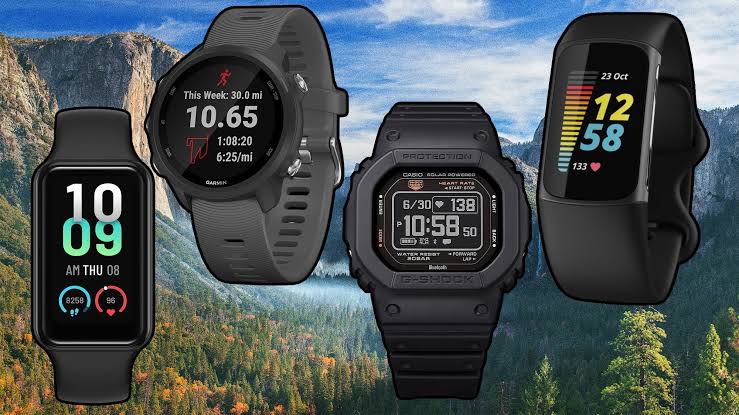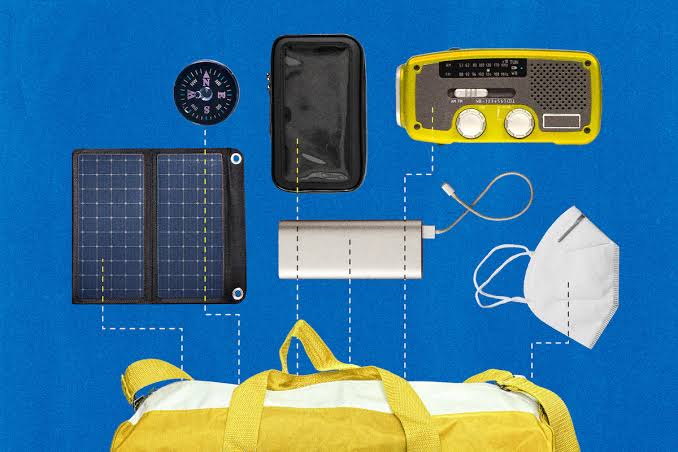Smartwatches are now much more than just devices for telling time or counting steps. By July 2025, they have become small health centers on your wrist, monitoring things like heart rate, stress, and even blood sugar in some models.
Whether you are a fitness fan, a casual exerciser, or just care about your health, a good smartwatch gives real-time information that helps you make better choices, improve workouts, and spot health problems early. There are many options on the market, but not all smartwatches offer the same accuracy, ease of use, or features. Below is a clear comparison of the best smartwatches for fitness and health in 2025.
Apple Watch Series 10: Precision Meets User Experience
The Apple Watch Series 10, launched in May 2025, is Apple’s most advanced wearable to date. With its new ultra-thin design and sapphire crystal display, the Series 10 maintains Apple’s sleek aesthetic while packing a host of fitness and health features.
What sets this watch apart is its updated health sensors. The Series 10 introduces improved sleep tracking with REM phase analysis, a second-generation optical heart rate monitor for more precise readings during workouts, and continuous SpO2 monitoring. One standout feature is its non-invasive blood glucose tracking, which, although still in beta testing, provides diabetics and fitness users with real-time sugar level trends.
Additionally, the watch supports advanced fitness coaching powered by AI. It adjusts workout plans based on your performance and recovery levels. Apple’s Health+ integration allows syncing with medical providers and lab results, making it an excellent choice for users deeply invested in both health monitoring and ecosystem continuity.
Samsung Galaxy Watch Ultra 2: A Fitness Powerhouse
Samsung’s Galaxy Watch Ultra 2, released in March 2025, caters to users looking for robust fitness and health tracking in a rugged, premium package. With military-grade durability and a titanium body, it’s designed for those with an active lifestyle who train in varied environments.
This watch shines with its improved BioActive Sensor 4.0, which delivers more accurate ECG readings, advanced sleep staging, and real-time blood pressure monitoring without needing a cuff. Its body composition scanner remains one of the most detailed in the market, providing percentages of muscle, fat, and hydration.
The Watch Ultra 2 also offers personalized training programs, running form analysis, and VO2 max estimation. Samsung Health continues to evolve, offering a clean, intuitive interface and compatibility with major fitness apps. Battery life stretches up to 72 hours, which is especially useful for long-distance athletes or those who prefer not to charge their device daily.
Garmin Venu 3 Pro: The Athlete’s Choice
Garmin’s Venu 3 Pro remains a top recommendation for serious athletes and outdoor fitness enthusiasts in 2025. Known for its GPS accuracy and robust workout tracking, the Venu 3 Pro caters to users who prioritize training metrics over lifestyle features.
The watch supports more than 30 sport profiles, from triathlons to HIIT, and features a built-in training readiness score that considers sleep, heart rate variability (HRV), and daily activity. It now also features real-time energy monitoring with Garmin’s Body Battery 2.0, helping users decide when to push or rest.
Unlike many smartwatches, the Venu 3 Pro functions independently from smartphones for most tasks. It offers downloadable maps, on-device music storage, and multi-band GPS, making it ideal for trail runners and cyclists. Its sleep tracking is enhanced with nap detection and circadian rhythm analysis, and its rugged build ensures it performs well in tough environments.
Fitbit Sense 3: Wellness First Approach
Fitbit’s Sense 3, launched in early 2025, appeals to users focused more on wellness and lifestyle than intensive sports training. It combines sleek design with holistic health features like stress management, mindfulness reminders, and menstrual health tracking.
The standout feature is its enhanced Electrodermal Activity (EDA) scanner that tracks stress levels and offers guided breathing sessions based on real-time measurements. Fitbit has also improved its heart rhythm notifications, sleep tracking with smart alarms, and built-in skin temperature sensors that now include fertility insights.
Though not as advanced in sports performance metrics as Garmin or Samsung, the Sense 3 is perfect for users who prioritize mental health and daily wellness. It integrates with Fitbit Premium for detailed reports and coaching tips and now includes AI-based nutrition planning tailored to fitness goals.
Whoop Strap 5.0: Continuous Performance Monitoring
Though not a traditional smartwatch, the Whoop Strap 5.0 continues to stand out in the wearable fitness market in 2025. Its screenless design is aimed at professional athletes and those who prefer in-depth biometric data over smartwatch features.
Whoop focuses on recovery, strain, and sleep performance. It continuously tracks heart rate variability, respiratory rate, and resting heart rate, calculating a daily recovery score to help guide activity levels. Unlike other watches, Whoop offers a subscription-based model where the hardware is free, but detailed analytics are behind a monthly paywall.
Its battery life lasts for five days, and the wearable is light and unobtrusive. Users looking to optimize their fitness from a data-driven, minimalist perspective find Whoop an excellent companion, especially when used alongside another smartwatch for notifications or GPS.
Key Considerations When Choosing a Smartwatch
Choosing the best smartwatch for fitness and health depends on your personal goals, lifestyle, and preference for design or software ecosystem. If you’re already embedded in Apple’s or Samsung’s ecosystem, it makes sense to stay within that realm for better compatibility and syncing.
Athletes may lean toward Garmin or Whoop for training precision, while wellness-focused users may prefer Fitbit for its guided programs and softer approach. Battery life, sensor accuracy, app support, and comfort are other crucial factors, particularly for users who wear the device 24/7.
As of July 2025, most top-tier smartwatches also integrate with healthcare providers, making them tools not just for fitness but for long-term health monitoring. With AI becoming more integrated, many devices now learn from your data over time, offering smarter insights and adaptive coaching.
Conclusion: Finding the Right Fit for Your Fitness Goals
The right smartwatch can act as a personalized health coach, motivator, and accountability partner. With technological innovations in 2025 making wearables more accurate, efficient, and personalized, users can select devices that align perfectly with their individual needs.
Whether you’re a competitive athlete, a wellness seeker, or someone just beginning your fitness journey, there’s a top-rated smartwatch designed for your lifestyle. Understanding the strengths of each model—from Apple’s refined precision to Garmin’s training depth—ensures that you invest in a tool that enhances both your health and your everyday performance.



